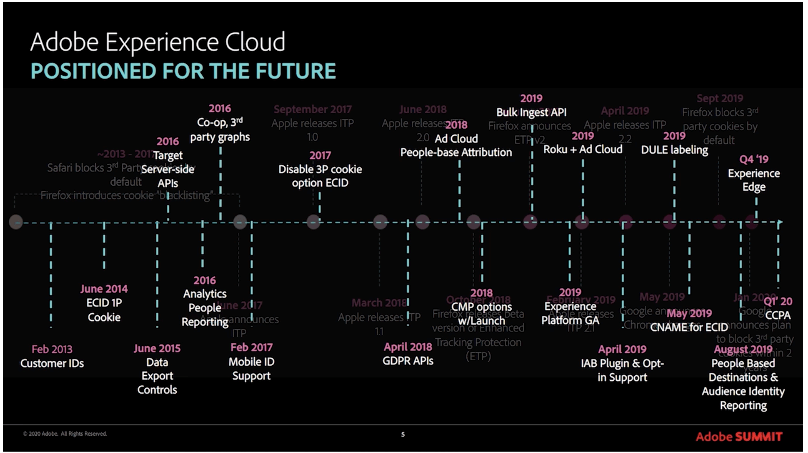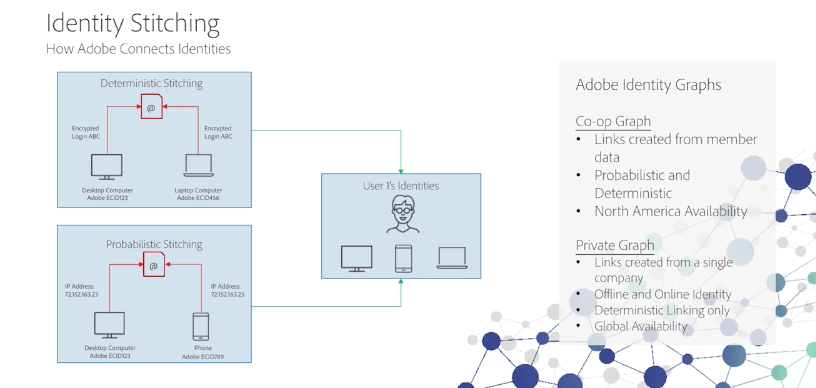Customers demand their data and their privacy be respected and increasing regulation mandates it. The innovative approach Adobe has taken to a post, cookie-less world will serve the marketing ecosystem well. Adobe offers some innovative thinking around identity and transparency, which are now the cornerstones of marketing. For example, the expansion of the graph to a “chose your own adventure” co-op and/or private graph capability, in conjunction with the identity graph viewer, will surely be a game changer in today’s messy world of black box graphs.
Proof Points
Flexibility for the Future. Adobe has been working for the past several years to enable flexible data ingestion, moving away from 3rd party cookie collection, and creating an agnostic people-based identity. All of these initiatives signal the right move to less dependency on the cookie as an identity proxy and more stability with known data. This move alone shows us that Adobe is serious about creating a platform that will thrive in a cookie-less world.

The Plan Forward. Adobe’s initial response to Google's announcement has shaped their path forward in three ways:
1. Adobe is leaning into privacy, consumer notice and choice by putting this at the forefront of their platforms.
2. Its active role help shape the future of identity and interoperability by leaning into all industry organizations. Adobe is currently watching 54 proposals, industry organizations and standards bodies.
3. Pushing clients to bring unique partnerships to their Adobe instance with publishers and media providers to the table to enable closer integrations.

An Inflection Point for Identity. AEP is set to be the crown jewel of the platform. Key features like the Adobe identity algorithm which stitches deterministic data (when you log into a platform) and probabilistic data (not logged in; on same IP address and time stamp) will be brought together to create identity. Two versions of an identity graph will be available within AEP: the co-op graph, built from over 100 member links all contributing to identity creation, and the Private Graph, working off only links created from a single company via both online and offline determined data. A feature that will truly help with transparency is the identity graph viewer, which will give the user the ability to understand what data is being stitched together, agree on a correct interpretation, and lend more understanding into how the identity was created.

“Identity ties the behaviors, attributes, and keys that describe a person, household, or business. Identity helps marketers better understand entities in their entirety and communicate with them across all channels.”
Our View
Marketers today have the powerful opportunity to take ownership of identity at the person level and make this a key advantage over competitors. To do this they must build their own private identity graph, use person based clean rooms for person-based analytics, and adopt an enterprise wide identity solution which can unify the organization around the customer.
Curated Content
-
Hyper-Personalization and the Connected Customer Experience, Merkle Marketing Imperatives
-
Accepting Privacy as a Customer Experience Issue, CMS Wire
-
Is it Time Marketers Take More Ownership over ID Resolution Platforms? Martech Today